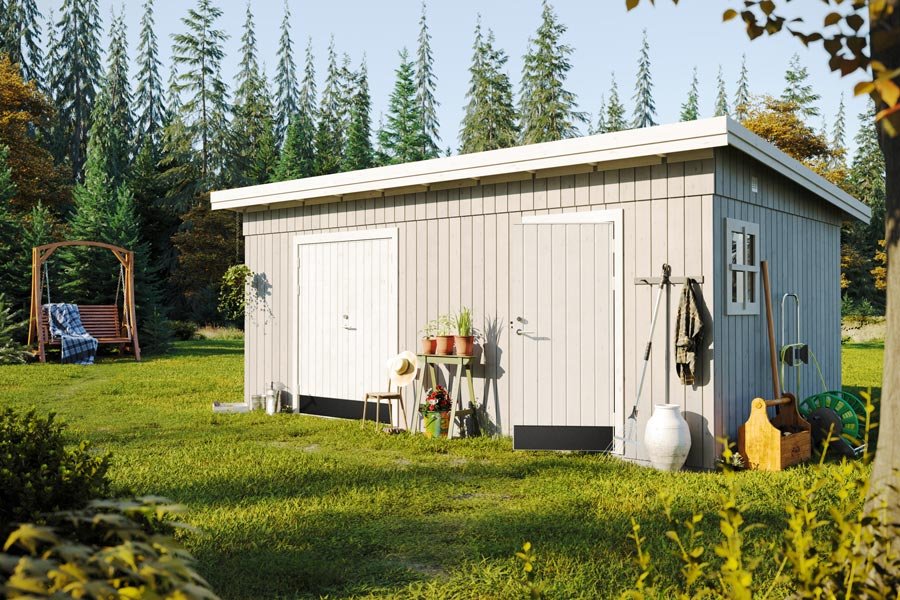
Your rain garden guide – construction, location, plants and more
We’ve talked about climate change and garden design on this blog before, and given pointers on how it might impact your garden. So now we’re going to continue on the theme, and discuss how we (or our gardens) could deal with a whole lot more rain.
For some of us, it will come into the form of heat and drought during the summers and torrentially wet winters with storms and flooding. For others, it will mean warmer, wetter weather all year round.
Either way, gardeners, wildlife watchers, water companies, and others are adopting the idea of the rain garden as a solution to all this excess water.
What is a rain garden?
Put simply, rain gardens are a sunken dip with plants and vegetation which collect run-off water, from your roof, patio, other hard surfaces, or overflow pipes. Crucially, they do this before the run-off water overwhelms your local drainage systems and leads to flooding.
They basically mimic the ups and downs of the natural landscape (before we covered it over with paving, roads, patios, car parks, patios!) and have plants that don’t mind their roots being waterlogged for a few days at a time.
The advantages of having a rain garden?

As you trudge through your boggy garden after a week of rain, you may feel you already have a rain garden. But planning a rain garden could transform a mudbath into something wonderful – a view to savour from your home or a garden room.
The great thing about a rain gardens is, they’re relatively easy to plant, and even easier to maintain. And in both respects, they’re a simple alternative to installing a garden pond (though it’s not actually a case of either/or, as they can look brilliant in combination).
Rain gardens can absorb up to 30% more water than a lawn, and don’t need mowing. And by reducing the risk of flooding, they also reduce the pollution risks associated with flooding (because run-off washes oil, metals and pollutants from roads etc into watercourses).
They can also be used to harvest rainwater, helping to reduce the effects of drought and cut down on the need for watering (another way in which they cut down on labour).
And, last but not least, it turns out there’s a huge choice of herbaceous and perennial plants that love to have a soggy bottom (see below). And also that many of these rain-tolerant plants are attractive to birds, butterflies, bees and other wildlife. So add biodiversity to the list of benefits.
What’s the best location for a rain garden?
Before you start digging a rain garden into a lawn or flowerbed, it’s important you know if and where any subterranean cables or pipes for gas and electricity etc. are in your garden. It’s best to avoid digging into them!
Secondly, it’s recommended not to site a rain garden within (3m) 10ft of a property – you don’t want water to do awful things to your foundations.
Rain gardens are not recommended for slopes with an incline of more than 10%. And don’t put one too close to a garden room or office in case there is overflow into the base area for the building.
Other than that, the main advice for positioning a rain garden is that it should be in full or partial sunlight (otherwise you may just end up with a swamp). And if you already have a natural dip in your garden, that could be a good starting point.
For more detailed advice about location and construction have a look through this user-friendly guide.
What’s the best soil for a rain garden?

The Royal Horticultural Society recommends a simple test to find out if your soil is suitable for a rain garden.
You dig a hole about 25cm (10 in) deep and fill it with water. Wait for it to drain away, then fill it up again, and watch how long it takes to drain. The RHS say an ideal rain garden site drains at a minimum of 1.25cm (0.5in) an hour. It should also be fine with absorption rates of up to 5cm (2in) an hour.
If it takes longer, your soil is not suitable – you might have a heavy clay soil, for example, or a high water table.
There are other variations on this test online, but the general idea is similar.
How big should a rain garden be?
It depends on the size of your garden overall, the level of drainage, climate, and the size of your run-off point (likely your roof).
The general rule of thumb is ‘the bigger the better’, especially since smaller ones are more prone to water logging and less able to prevent large run-off into drains etc. Again, the RHS website has some practical advice.
What plants are recommended for a rain garden?

There’s a surprisingly wide choice of easy-to-maintain plants – herbaceous perennials, in particular – that thrive in wet ground. Generally, you want to plant a broad variety of species with strong and dense roots to ensure absorption of water.
The main plants to avoid are Mediterranean species such as lavender whose roots are water-averse, or plants such as azalea which are prone to root rot.
The London Wetland Centre website has some excellent ideas for planting, and there are extensive lists of plant recommendations on the RHS website.

Wildflowers can also grow well around the edge of rain garden, and can help attract wildlife. There are some good ideas for wet soil wildflowers available here.
With these lists in hand, you’re well on the way to a climate-adapted garden that will not only be better for the environment than flooded hard surfaces or a boggy lawn, it will also be less stressful and look better – whether you’re enjoying the view from your kitchen window or relaxing in a garden room.
Too much rain? Not a problem. For the gardener at least.
















